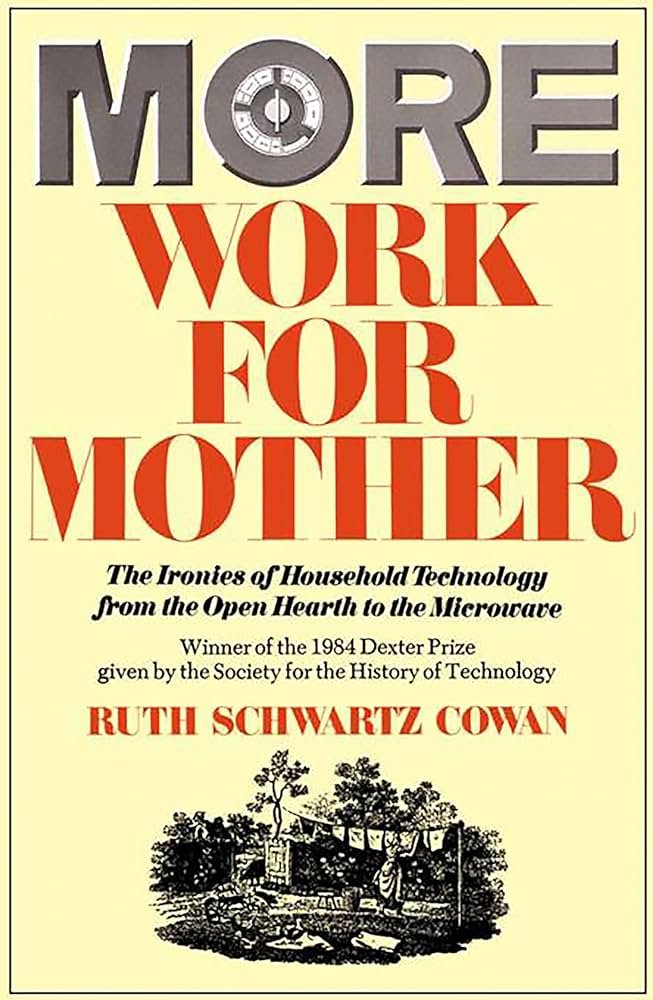by Alexandra Thrall & Paige Arnell
More Work for Mother Unit Guide
Framing questions
Who in a family traditionally does most of the housework? Why?
When did the household division of labor (the doctrine of separate spheres) form? Why?
How did technological innovations, like the invention of the stove, change housework?
Activity 1
Have students make predictions based on these framing questions. We suggest writing these questions on anchor charts and having students write their answers on post-its and stick them to the anchor charts. Discuss students’ preliminary thoughts and why they believe what they believe.
Note: There is obviously some vocabulary here that may be useful to pre-teach!
Activities
2-5
Read chapters from More Work for Mother. We abridged and added pictures and discussion questions to Chapters 1, 2, 3, and 7. Students can read independently, although we suggest reading them as a class to allow space for clarifications and discussion.
After each chapter, discuss the reading questions.
For Chapter 7, we suggest using the examples in the text to show students the kinds of research that they are going to do in the culminating project. Draw students’ attention to the details that mothers included in their descriptions of their daily housework, and to the time studies.
Culminating Project
After completing the reading and analysis, students collect their own empirical data, asking:
How has housework changed or stayed the same since Ruth Schwartz Cowan wrote More Work for Mother?
Project Data Collection
Students have the option to complete one or more of the following tasks:
Interview a person who does housework in your home.
Keep a time chart on the amount of housework done by an adult in your home.
Complete housework on your own and document the work process.
To support this, I gave them this Time Study Sheet, we brainstormed sample interview questions as a class, and we talked through a work process. Students had one week to collect their data and bring it to class.
Compiling Project Data
When they bring their data to class, assign them to small teams of 3-4 students to compile their data into findings that address the research question. You can have your students use these Then/Now Comparison and Project Outline worksheets to scaffold the process of comparing past with present, and comparing their teams’ data.
Presenting
Give students the opportunity to present their findings to the class. Most of my students created a slideshow, but some preferred to display their work on an anchor chart. Close the unit by discussing the continuity and changes in household labor and technologies from the colonial era to present.
If you need to collect a grade from this, here is a sample project rubric.
Lesson Authors
Alexandra (Allie) Thrall is the mother of two small kids, a former 8th grade history teacher, and current doctoral researcher in Baylor University’s Department of Curriculum & Instruction. Her research focuses on the interplay between technological developments and civic possibilities, and the implications for teaching and learning.
Paige Arnell is the mother of four children, a former high school English teacher, and current Dean of Curriculum at Kirby Hall School in Austin, Texas. While literacy has always been her primary focus, she finds herself drawn more and more to studying systems of education, specifically exploring the ways school structures can support imagination, curiosity, and critical thinking.
